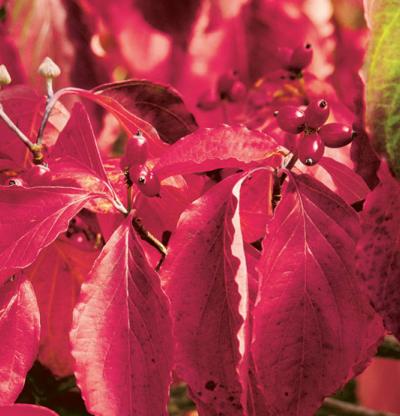





 Flowering dogwood (Cornus florida)
KOR-nus FLOOR-ih-dah
Genus:
Cornus
Flowering dogwood (Cornus florida)
KOR-nus FLOOR-ih-dah
Genus:
Cornus
This native flowering tree is best known for its early spring blossoms, which are actually yellowish green flowers clustered in the center of four showy, white to pink bracts 1-1/2 to 2 inches long. Clusters of four bright red fruits mature in early fall, often persisting into the beginning of winter.
Noteworthy Characteristics:Reddish-brown wood is extremely hard and is used to make tool handles. Great as a specimen tree or in groupings, also in the woodland garden. Fruit is toxic to humans.
Care:Grow in fertile, humus-rich, well-drained soil. Prefers neutral to acidic soil.
Propagation:Graft cultivars in winter. Root greenwood cuttings in summer.
Problems:Dogwood blight, powdery mildew, Discula blight, canker, bacterial leaf spot, and mushroom root rot. Common: twig borers, weevils, sawfly, scale insects, aphids, leafhoppers, root knot nematodes, and thrips.
Copyright © www.100flowers.win Botanic Garden All Rights Reserved